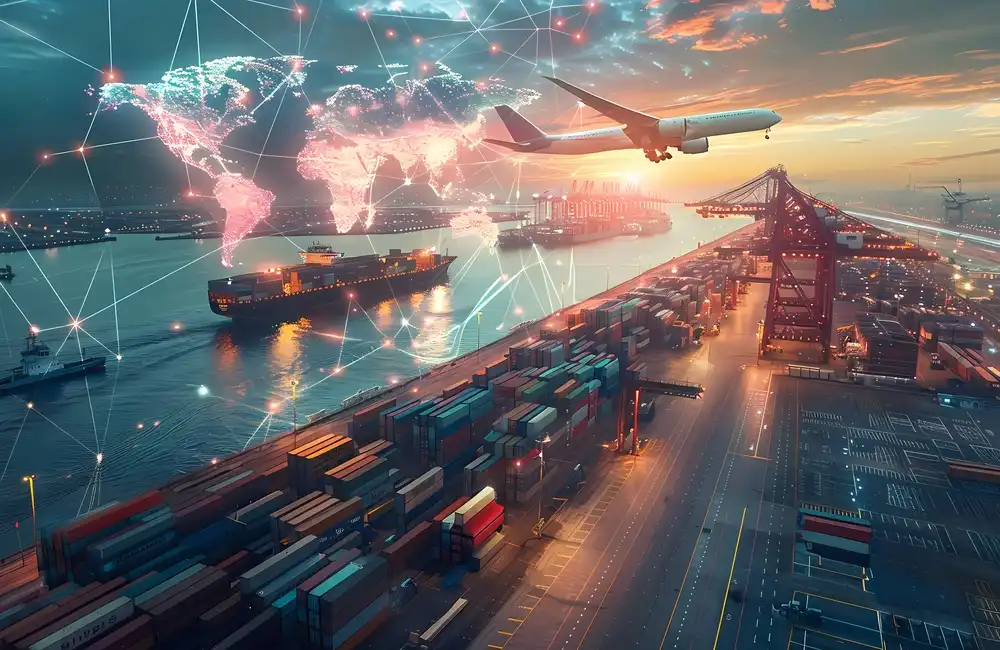The proposal aims to improve global shipping efficiency by providing strategic access to key canals.
President Donald Trump announced that US military and commercial ships should have free access to both the Panama and Suez canals. President Trump introduced a plan in April 2025 which intends to speed up global trade and minimise operational expenses in line with his larger mission to improve shipping efficiency.
Timeline Of April
In an April 2025 announcement, President Trump described a plan for global shipping efficiency which included allowing US military and commercial vessels free passage through both the Panama and Suez canals. President Trump argued that his plan to reduce logistics expenses and speed up supply chains would provide a direct economic benefit for US trade and enable the quicker transportation of goods along key waterways.
Trump’s Announcement and Directive to State Department
Through his Truth Social account, Trump broadcasted a message about the Panama Canal and Suez Canal being vital to international shipping lanes. Trump instructed Secretary of State Marco Rubio to hold discussions with Panama and Egypt to find diplomatic solutions to put the proposed free transit system into effect. The post stated America’s military and businesses should have more efficient global operations while highlighting the administration’s dedication to resolving supply chain challenges for U.S. industries.
Historical Context of the Canals
The United States built and managed the Panama Canal during the early 20th century before transferring control to Panama in 1999 under the Torrijos–Carter Treaties. The canal serves as a vital global trade conduit while its toll fees generate substantial income for Panama’s GDP. The Suez Canal serves as a crucial connection between Europe and Asia because it unites the Mediterranean Sea with the Red Sea. The Suez Canal Authority oversees operations which produce considerable revenue for Egypt through multi-tiered fee structures that support the nation's development initiatives.
US Shipping Operations and Global Supply Chains
Trump’s proposal promotes cost savings which would benefit US shipping lines by decreasing their large canal fee payments. Decreased logistics charges could enhance the competitive edge of American export products. Optimised canal operations would bring substantial benefits to global supply chains, especially for industries dependent on just-in-time delivery systems. In industries like automotive and electronics, faster transit times would cut delays and warehousing costs, generating economic advantages.
Reactions from Industry and Canal Authorities
Panama Canal Authority officials showed concern over changes to their fee structure which they believe are essential for maintaining the country's economic stability. While maintaining its policy of equal access for every nation, the Suez Canal Authority expressed willingness to engage in discussions about special transit arrangements according to Reuters. The World Shipping Council, representing industry trade groups, supported cost reduction efforts but warned that extensive modifications could disrupt canal funding structures. Experts in geopolitics pointed out possible diplomatic challenges between the US and Panama and US and Egypt because toll revenues are vital for these countries' economic stability.
Diplomatic, Financial, and Regulatory Implications
Trump’s free transit proposal prompts scrutiny about its diplomatic, financial, and regulatory feasibility. The Panama and Suez canals depend on toll revenues to fund operations and infrastructure investments. Experts believe that major revenue losses would require canal authorities to explore new funding methods or impose higher tolls on international traffic. The proposal brings up potential violations of World Trade Organisation (WTO) regulations against discriminatory trade practices, which require mutual agreement to be permissible. Broader US diplomatic relations with Panama and Egypt may be affected by these negotiations which could lead to changes in existing bilateral partnerships.
Conclusions and Investment Opportunities
The implementation of free canal transit at Panama and Suez would greatly enhance global shipping efficiency and create cost advantages for US exporters and importers while making supply chains more efficient. The successful implementation of this proposal hinges on diplomatic negotiations along with revenue-sharing mechanisms and regulatory approvals.
This development creates investment possibilities for institutional investors focused on maritime infrastructure and logistics, which includes updating port facilities and finding alternative canal funding solutions. Experts recommend following the progress of Trump's talks with Panama and Egypt to understand potential changes in the international shipping sector.

















